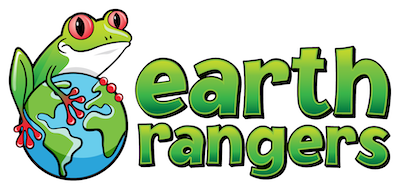Hoot, hoot! It’s owl talk o’clock! Today we are going to be talking about the gallivanting great horned owl. The great horned owl is a fascinating bird – its most intriguing characteristics being its yellow eyes, deep hoot and sharp talons, oh my! You can find great horned owls all over various ecosystems within North America. Some examples include wetlands, forests, grasslands, urban areas and even deserts!
Tips to find a great horned owl:
- If you would like to have an up close and personal encounter with these magnificent birds, build a nest box and place it in your backyard – a pair of great horned owls might just stop by.
- Remember, great horned owls are mostly nocturnal, so you may have to stage an overnight stakeout to observe these special creatures!
- Great horned owls often construct their nests in cottonwood, juniper, beech, and pine trees, so you may want to brush up on your tree ID to truly track down one of these owls.

Photo: Timothy G. Lumley
Like other birds of prey, great horned owls are considered raptors – all raptors have a hooked beak, strong feet, extremely sharp talons, very good eyesight and are carnivores. Great horned owls have a very diverse diet, one of the most diverse diets of all North American raptors in fact! They feed on various rodents, hares, scorpions, skunks, geese and other species of raptors or small birds. Great horned owls are even known to prey on house cats, so watch out for your feline friends!

Photo: Peter K. Burian
Sadly, great horned owl populations are declining. In Canada, populations of the great horned owl are suffering from even larger declines than observed elsewhere. Overall, between the years 1966-2015, great horned owls in Canada have declined by 72%. Reasons for this significant decline include hunting (which is fortunately, now illegal), changes in the populations of their prey, loss of habitat, accidental poisoning owing to the accumulation of pesticides and other toxic substances consumed by their prey. It is very sad that these magnificent birds are undergoing such challenges owing to human activity. By conserving natural areas, being mindful of the products we put into the environment, and constructing nest boxes to help provide a home for owls to raise their young, we can all contribute to restoring the Canadian great horned owl population to its original state.

If you want to take a step further to protect the great horned owl, you’re in luck! Alongside, the Nature Conservancy of Canada (NCC), Earth Rangers is working to restore a very important habitat to all sorts of critters, including the great horned owl! This habitat is known as the Lathrop Nature Preserve and consists of forested woodlands, wetlands and glades. These wooded areas make the perfect home for our feathered friends, the great horned owl. This project works to increase existing habitat and provide a safe place for owls to hunt, nest and raise their young. If you would like to support this project and the protection of important habitats, such as the Lathrop Nature Preserve, adopt a great horned owl today!



I already adopted a great horned owl. His name is Coco!
Good Job!
I saw an owl one time in the Fall in the forest.
I will make a nest box for a great horned owl. What is everyone else going to do to help this amazing bird?
I love owls
I saw a great horned owl in Reifel Bird Sanctuary! It was a baby.And Yesterday I saw an eagle steal a baby heron from its nest in Stanley Park
I love those animals they are awesome but to bad there habitat is going away
I love owls
Wow that’s really cool! I haven’t adopted the horned owl yet but I’ll see if I can soon ☺️
I love great horned owls
So neat!!